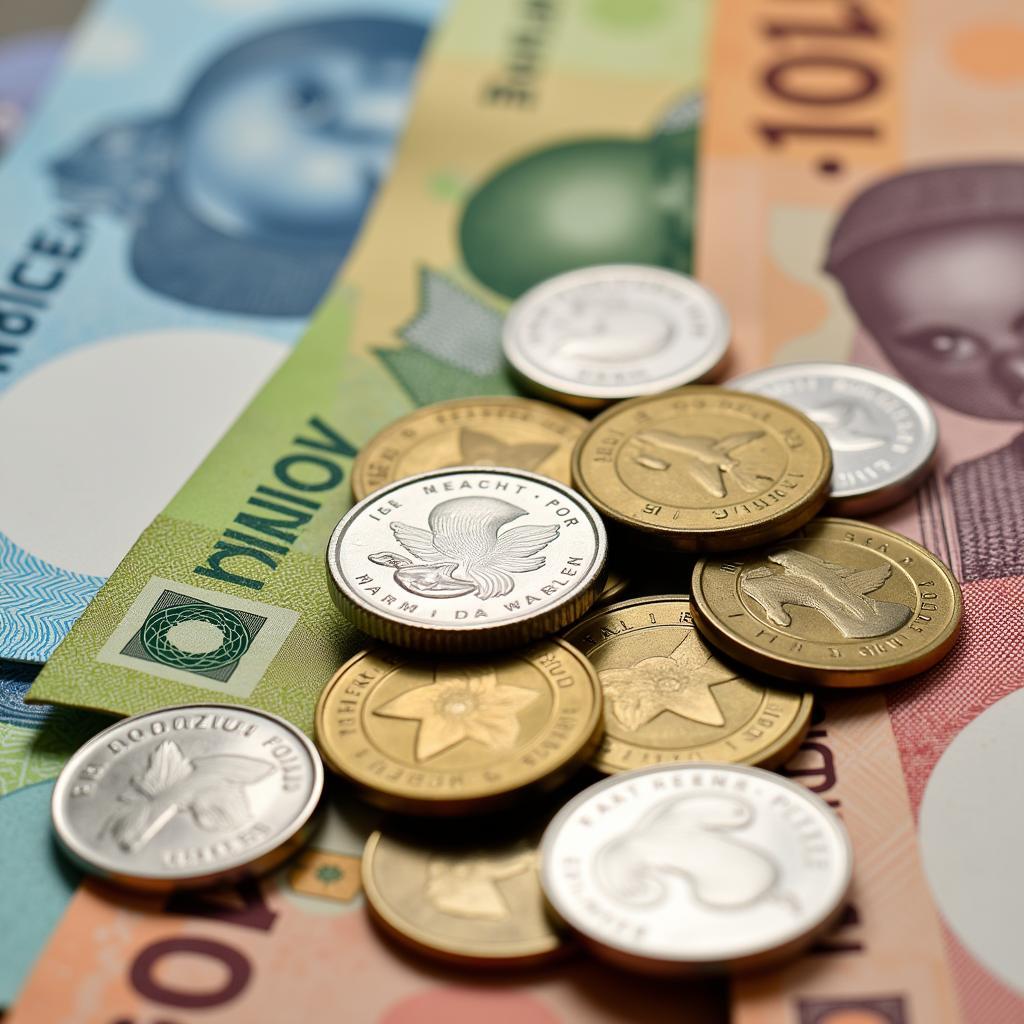Discovering the Art of African Jewellery Craft
African Jewellery Craft is more than just adornment; it’s a powerful expression of cultural heritage, artistic skill, and personal identity. From the intricate beadwork of the Maasai to the bold gold designs of West Africa, each piece tells a story, connecting the wearer to a rich tapestry of traditions and beliefs.  Maasai Beadwork Necklace
Maasai Beadwork Necklace
A Journey Through Time: The History of African Jewellery Craft
For centuries, African jewellery craft has played a significant role in various cultures across the continent. Materials like gold, silver, ivory, bone, and feathers were not simply decorative elements, but symbols of status, spirituality, and belonging. african lady with craft jewellery showcases the beauty and significance of these pieces. These pieces often served as markers of social standing, marital status, or even spiritual connection to ancestors.
The Significance of Materials
The choice of materials in african jewellery craft is deeply symbolic. Gold, often found in West Africa, represented wealth and power. african gold bangles are a testament to this historical tradition. Ivory, though controversial today, once symbolized purity and high status. Beads, readily available and versatile, allowed for intricate patterns and vibrant color combinations, each with its own specific meaning.
Exploring Regional Styles in African Jewellery Craft
The vastness of Africa contributes to the diverse and unique styles of jewellery craft found across the continent. From the elaborate headdresses of North Africa to the intricate beadwork of the south, each region boasts its own distinctive aesthetic. african culture inspired earrings are a beautiful example of this regional diversity.
West African Gold: A Legacy of Luxury
West Africa has a long and rich tradition of goldsmithing. Intricate designs, often incorporating symbolic motifs, adorn bracelets, necklaces, and rings, showcasing the skill and artistry of the craftspeople.
East African Beadwork: A Colorful Narrative
East African communities, such as the Maasai and Samburu, are renowned for their vibrant beadwork. These elaborate pieces, often incorporating intricate patterns and bold color combinations, are not just decorative; they communicate stories, histories, and social messages.
What are some common techniques used in African jewellery craft?
Many traditional techniques are still used today. Lost-wax casting, filigree, and granulation are just a few examples of the sophisticated methods employed by skilled artisans. Beadwork, weaving, and carving are also prevalent, resulting in a breathtaking array of textures and designs.
How has African jewellery craft evolved over time?
While traditional techniques and materials remain important, contemporary African jewellery craft also embraces modern influences. New materials, such as recycled plastics and metals, are being incorporated, and designers are experimenting with innovative designs, blending ancient traditions with contemporary aesthetics.
The Modern Renaissance of African Jewellery Craft
Today, african jewellery craft is experiencing a global resurgence in popularity. Designers are drawing inspiration from traditional motifs and techniques, reimagining them for a modern audience. african colour palette is influencing global fashion trends. This renewed interest not only celebrates the beauty and artistry of African jewellery but also provides economic opportunities for artisans and communities.
Amani Zuberi, a renowned Tanzanian jewellery designer, notes, “African jewellery is not just about aesthetics; it’s about heritage, storytelling, and empowering communities through craft.”
african emerald mines also contribute to the allure and value of African jewellery. Emeralds mined in Africa are prized for their unique qualities and rich color, further enriching the continent’s jewellery craft heritage.
How can I identify authentic African jewellery?
Look for handcrafted details, unique designs, and the use of traditional materials. Researching specific regional styles and techniques can also help you discern authentic pieces from mass-produced imitations.
Dr. Fatima Mohamud, a historian specializing in African art, states, “Authentic African jewellery carries the weight of history and tradition. Each piece is a tangible link to the past, connecting the wearer to a rich cultural legacy.”
In conclusion, african jewellery craft is a vibrant and dynamic art form, reflecting the diverse cultures and rich history of the continent. From ancient traditions to modern interpretations, African jewellery continues to captivate and inspire, offering a powerful connection to the past and a glimpse into the future of this enduring art form.
FAQ:
- What are some popular materials used in African jewellery?
- Where can I buy authentic African jewellery?
- How can I care for my African jewellery?
- What is the significance of different colors and symbols in African jewellery?
- Are there ethical considerations when purchasing African jewellery?
- How can I support African jewellery artisans?
- What are some contemporary trends in African jewellery design?
For further information, you might be interested in reading about:
- African textiles and fashion
- African mask making traditions
- The history of African art
When you need assistance, please contact us. Phone: +255768904061, Email: kaka.mag@gmail.com Or visit us at: Mbarali DC Mawindi, Kangaga, Tanzania. We have a 24/7 customer service team.

